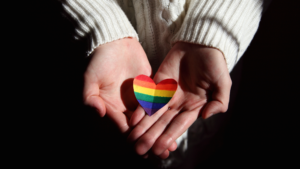Vulvodynia affects the vulvar area of the female genitals. The vulva is the external genital organs of the female anatomy. Symptoms of this sexual dysfunction include pain, burning, stinging, irritation or a sharp pain that occurs in the vulva. Vulvodynia is variable in occurrence; it may be constant, intermittent or only occurring upon touch. Furthermore, symptoms are not always localized in one place on the vulva and could affect the entire vulva. Vulvodynia may affect many aspects of a woman’s life including sexual relations, prolonged sitting and recreational activities such as bike riding.
Although vulvodynia is mostly diagnosed as a psychosomatic condition there are some physical causes for the dysfunction. Possible causes include allergy or sensitivity, genetic predispositions to inflammation, yeast infections, human papillomavirus (HPV), and injury.
Diagnosis for vulvodynia should assess duration of pain, possible allergies, sexual history, previous medical history, treatments and surgeries. In order to test for pain locations in the vulva, a gynecologist will often use a cotton swab to quantify pain locations as mild, moderate, or severe (Haefner et al., 2005).
Possible treatments for vulvodynia include (Haefner et al., 2005):
- Vulvar care measures including avoiding vulvar irritants such as perfume, shampoo, detergents etc.
- Wearing cotton underwear
- Topical
- Oral
- Injectable medications
- Biofeedback
- Physical therapy
- Low-oxalate diet (ex: http://www.lowoxalate.info/recipes.html)
- Acupuncture
- Hypnotherapy
According to past research by Julian Slowinski (2001), a woman’s response to vulvar pain may include:
- Vulvar/vaginal pain: initial experience of the sexual symptoms, regardless of their etiology
- Anticipation of pain/discomfort: psychological response, both reflexive and influenced by past learning experience
- Sexual avoidance: behavioral aspects; mediated by cognitions, affect, and images
- Interpersonal consequences: effect on the relationship and sexual partner
- Emotional response: to both the pain and interpersonal consequences (e.g., anxiety/fear/guilt/frustration/anger/depression)
- Possible development of sexual dysfunctions secondary to vulvar/vaginal pain: pain interferes with the sexual response cycle; possible disorders of desire, arousal, or orgasm; development of vaginismus
Sex therapy can assist with the possible psychosomatic cause of vulvodynia, emotional distress and interpersonal conflict as a result of the dysfunction.



